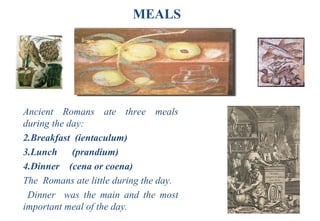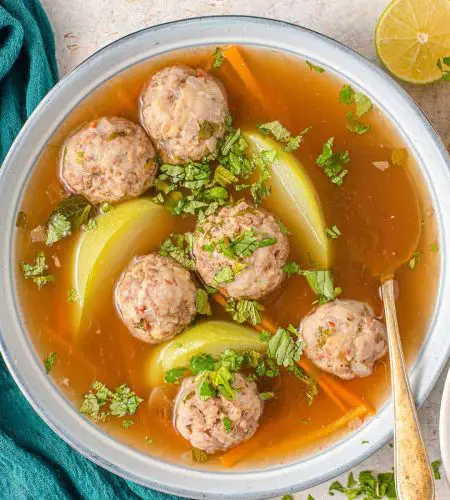Ever wish you could dine like a Roman emperor without having to rely on time travel or a DeLorean? Well, dust off your toga and prepare to feast like a true culinary conqueror, because we’ve got the scoop on how to revive ancient Roman gastronomy in your very own kitchen. With authentic recipes that will make your taste buds do a toga dance, you’ll be saying “Pass the garum, please!” in no time. So pull up a marble table and get ready to indulge in the ultimate throwback feast fit for a Caesar – or at least a hungry history buff. Veni, vidi, devouri!
Contents
Exploring Ancient Roman Cuisine through Authentic Ingredients
When it comes to experiencing the flavors of Ancient Roman cuisine, authenticity is key. By using traditional ingredients that were used during the time of the Roman Empire, you can truly transport yourself back in time to taste what the ancient Romans enjoyed.
One essential ingredient in Ancient Roman cooking is garum, a fermented fish sauce that was used as a condiment in almost every dish. Made with fish guts, salt, and various herbs, garum added a unique umami flavor to dishes that is hard to replicate with modern ingredients. For a truly authentic taste, make sure to add a generous splash of garum to your dishes!
Another staple in Ancient Roman cuisine is spelt, a type of ancient wheat that was used to make bread, porridge, and even pasta. Spelt has a nutty flavor and a chewy texture that adds depth to dishes. Try using spelt flour to make your own ancient Roman-style bread or pasta for a taste of history.
And let’s not forget about the beloved Roman staple, olives. Romans used olives in almost every dish, from salads to stews to desserts. The briny flavor of olives added a unique tang to dishes that is still celebrated today. Be sure to incorporate plenty of olives into your Ancient Roman-inspired cooking for an authentic taste of the past!
Key Characteristics of Ancient Roman Gastronomy
When it comes to Ancient Roman gastronomy, a few key characteristics stand out that set their culinary traditions apart from others. One of these characteristics is their love for spices and seasonings. Romans weren’t afraid to experiment with exotic flavors like black pepper, cumin, and garum, a fermented fish sauce that was a staple in many dishes.
Another defining feature of Ancient Roman cuisine was their penchant for extravagant feasts. These lavish meals often featured multiple courses, ranging from appetizers like stuffed dormice to main dishes like roasted boar. And let’s not forget the decadent desserts, which could include honey-drenched pastries and fresh fruit.
Interestingly, the Romans also had a strong preference for fresh, seasonal ingredients. Whether it was vegetables like asparagus and artichokes or fruits like figs and dates, they believed in using the best produce available to create delicious and nutritious meals.
Overall, Ancient Roman gastronomy was a delightful blend of bold flavors, extravagant feasting, and a reverence for fresh, seasonal ingredients. It’s no wonder that their culinary traditions have left a lasting impact on modern cuisine!

Rediscovering Traditional Roman Cooking Techniques
Are you tired of the same old boring recipes? Do you long for the days when cooking wasn’t all about fancy gadgets and complicated techniques? Well, look no further! It’s time to rediscover the lost art of traditional Roman cooking techniques.
Forget about sous vide and air fryers. The Romans had much simpler (and more delicious) methods of cooking. From roasting and braising to fermenting and pickling, there are so many ways to elevate your dishes to the next level.
So, put down that immersion blender and dust off your clay pots and mortar and pestle. Get ready to embrace the ancient wisdom of our culinary ancestors. It’s time to bring back the flavors of Rome!
Join us on a journey back in time as we explore the rich culinary history of Rome. Let’s uncover the secrets of traditional Roman cooking techniques and bring a taste of the past to your modern kitchen. Who knows, you might just discover your new favorite recipe along the way!

Adapting Ancient Recipes for Modern Palates
So you’ve stumbled upon an ancient recipe from millennia ago and you’re itching to try it out. But let’s face it, tastes have changed over the centuries and what might have satisfied a pharaoh’s craving may not quite hit the spot for your modern palate. Fear not, brave culinary explorer, for there is hope yet!
First things first, take a good look at the ingredients list. Do you even know what half of these things are? Dried camel hump? Sumerian saffron? It’s like a shopping list from the set of an Indiana Jones movie. Time to make some substitutions!
Next, consider the cooking methods. Back in ancient times, they didn’t have fancy gadgets like Instant Pots or air fryers. They had to rely on good ol’ fire and elbow grease. So maybe ditch the clay pot and opt for a trusty skillet instead. Your taste buds will thank you.
And finally, don’t be afraid to add a modern twist to the recipe. Who says you can’t throw in some avocado or sriracha? After all, the ancients didn’t have access to these exotic ingredients, so why not shake things up a bit? Just remember, cooking is an art – so get creative, experiment, and above all, have fun!

Sourcing Authentic Roman Ingredients for Your Kitchen
So you want to bring a taste of ancient Rome into your modern kitchen? Well, you’re in luck because I’ve got the inside scoop on where to find the most authentic Roman ingredients for your culinary adventures.
First things first, if you want to truly transport yourself back in time, you’ll need to get your hands on some garum. This fermented fish sauce was a staple in ancient Roman cuisine and added a distinct umami flavor to dishes. You can order a bottle online or try your hand at making it yourself – just be prepared for your kitchen to smell like a fish market for a few days!
Next on the list is spelt flour. Romans loved their bread, and spelt was one of the main grains used in their baking. You can find spelt flour at most health food stores or specialty grocers. Trust me, once you taste the nutty, slightly sweet flavor of spelt bread, you’ll never look at regular wheat bread the same way again.
No Roman meal would be complete without a generous drizzle of extra virgin olive oil. Look for an oil that is cold-pressed and sourced from the Mediterranean region for that authentic Roman taste. Remember, the Romans believed that olive oil was not just for cooking, but also for skincare and even lamp fuel – talk about multi-purpose!
Bringing the Flavors of Ancient Rome to Your Table Today
Ever wondered what it would be like to dine like a Roman Emperor? Well, wonder no more because we’re bringing the flavors of Ancient Rome straight to your table today! Say goodbye to boring old modern-day dishes and get ready to indulge in some ancient culinary delights.
Picture this – a table filled with lavish spreads of garum (a fermented fish sauce), pullum frontonianum (roasted chicken with pine nuts and honey), and pepos thermopolium (stuffed squash). Your taste buds will be in for a royal treat like never before!
And let’s not forget about the famous mulsum (a honey-infused wine) that the Romans loved to sip on during their feasts. Pour yourself a goblet and transport yourself back in time to the extravagant banquets of Ancient Rome.
So why settle for mundane meals when you can experience the decadence of Ancient Roman cuisine right in your own home? Gather your friends and family, dust off your toga, and get ready for a dining experience fit for a Caesar!
FAQs
Why should we bother reviving ancient Roman recipes in today’s modern kitchen?
Well, imagine impressing your dinner guests with a dish that Julius Caesar himself might have enjoyed! Plus, who wouldn’t want to transport their taste buds back to the days of gladiators and chariot races?
Are these recipes difficult to recreate considering the lack of exact measurements and modern cooking techniques?
Not at all! Think of it as a fun culinary adventure. Embrace the challenge of interpreting vague instructions like “a handful of this” or “cook until done”. Who needs precise measurements when you have a sense of adventure?
What are some must-try ancient Roman dishes that have stood the test of time?
Definitely give “Garum” a try – it’s a pungent fish sauce that was the ketchup of ancient Rome. And don’t miss out on “Patina”, a savory custard dish that can be sweet or savory depending on your preference. You can’t go wrong with these classics!
Is it possible to find the necessary ingredients for these ancient recipes in today’s supermarkets?
With a little creativity and maybe a trip to a specialty store, you can definitely track down most ingredients. Olive oil, honey, and spelt flour are all still readily available, so don’t let that stop you from embarking on your Roman culinary journey!
Are there any modern adaptations or twists that can be incorporated into these ancient recipes?
Absolutely! Feel free to add some modern flair to these ancient recipes. Experiment with different seasonings, substitute ingredients, or even try cooking methods that were unheard of in ancient Rome. The key is to have fun and make the recipes your own!
—
Dig In and Eat Like a Roman!
Congratulations, aspiring Roman chefs! You now have the tools and knowledge to whip up authentic ancient Roman dishes in your own kitchen. From savory garum to sweet honeyed dates, your taste buds are in for a treat. So gather your ingredients, don your toga, and let the culinary adventures begin. Just remember, when in doubt, ask yourself: What would Julius Caesar eat? Happy cooking!




